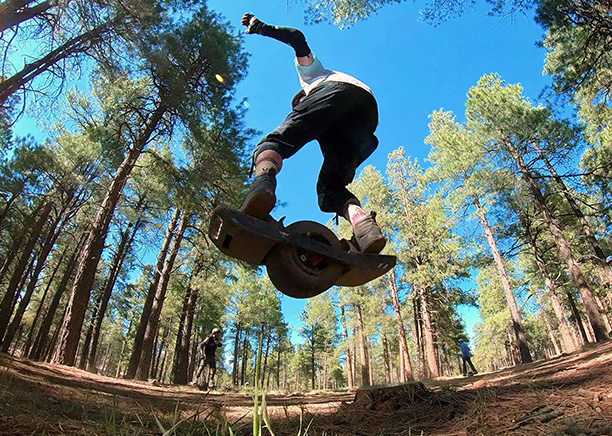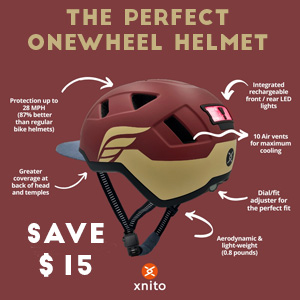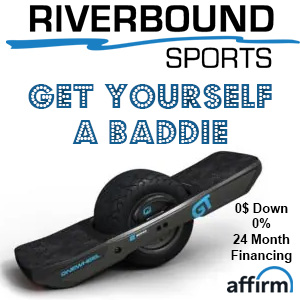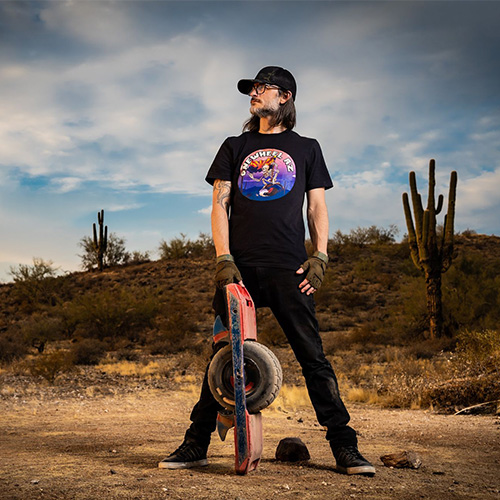Riding Techniques and Tips
Getting the hang of riding a Onewheel can be both exciting and challenging. This section will guide you through essential riding techniques and tips to help you master your Onewheel, whether you're a beginner or looking to advance your skills.

Basic Riding Techniques
Let's go over some of the basic techniques to get you riding.
Mounting and Dismounting
- Mounting: Start by placing your back foot on the rear footpad. Once stable, gently step your front foot onto the front footpad. Make sure to keep your knees slightly bent and your body relaxed.
- Dismounting: Lightweight and easy to carry, intuitive SimpleStop dismount technology, 6-8 miles range.
Balancing
- Posture:Stand with your feet shoulder-width apart, knees slightly bent, and back straight. Keep your arms out for balance and look ahead rather than down at the wheel.
- Weight Distribution:Shift your weight slightly forward to move forward and lean back to slow down or stop. Practice shifting your weight smoothly to maintain balance.
Turning
- Leaning:To turn, gently lean in the direction you want to go. Use your shoulders and hips to guide the turn rather than just your feet. Start with wide, gentle turns and progress to sharper ones as you become more confident.
- Carving:Similar to snowboarding, carving involves making S-shaped turns. This helps with speed control and adds a fun element to your ride.
Advanced Riding Techniques
Tricks and Stunts
- 180s and 360s:Once comfortable with basic riding, you can try performing spins. Start with 180-degree turns and gradually work up to full 360s.
- Nose and Tail Drags:Lift the front or rear of the board slightly while riding to drag the nose or tail. This is an advanced move that requires good balance and control.
Off-Road Riding
- Preparation:Ensure your Onewheel is equipped with appropriate tires and that you’re wearing protective gear.
- Techniques:When riding off-road, maintain a lower center of gravity by bending your knees more. Keep your weight centered and be prepared for sudden changes in terrain.
Speed Control
- Pushback:Understand that the Onewheel will push back at higher speeds to prevent you from going too fast. Learn to recognize and respond to pushback to maintain control.
- Regenerative Braking:Familiarize yourself with the braking system. To brake, lean back gently to slow down while allowing the motor to regenerate battery power.
Maintenance and Care
Regular Checks
- Tire Pressure:Keep your tire inflated to the recommended pressure for optimal performance and battery life.
- Footpads and Sensors:Ensure the footpads and sensors are clean and functioning properly. Dirt or debris can interfere with sensor accuracy.
Battery Care
- Charging:Use the manufacturer-recommended charger and avoid overcharging. Regularly check for any signs of wear or damage to the charger and charging port.
- Storage:Use bumpers and rail guards to protect your Onewheel from scratches and impacts. This is especially useful if you frequently ride in rugged terrain.
Cleaning and Protection
- Cleaning:Wipe down your Onewheel with a damp cloth after each ride to remove dirt and debris. Avoid using high-pressure water as it can damage the electronics.
- Protection:Use bumpers and rail guards to protect your Onewheel from scratches and impacts. This is especially useful if you frequently ride in rugged terrain.
By mastering these riding techniques and adhering to maintenance guidelines, you can enjoy a smooth, safe, and exciting Onewheel experience. Keep It Stokey!


